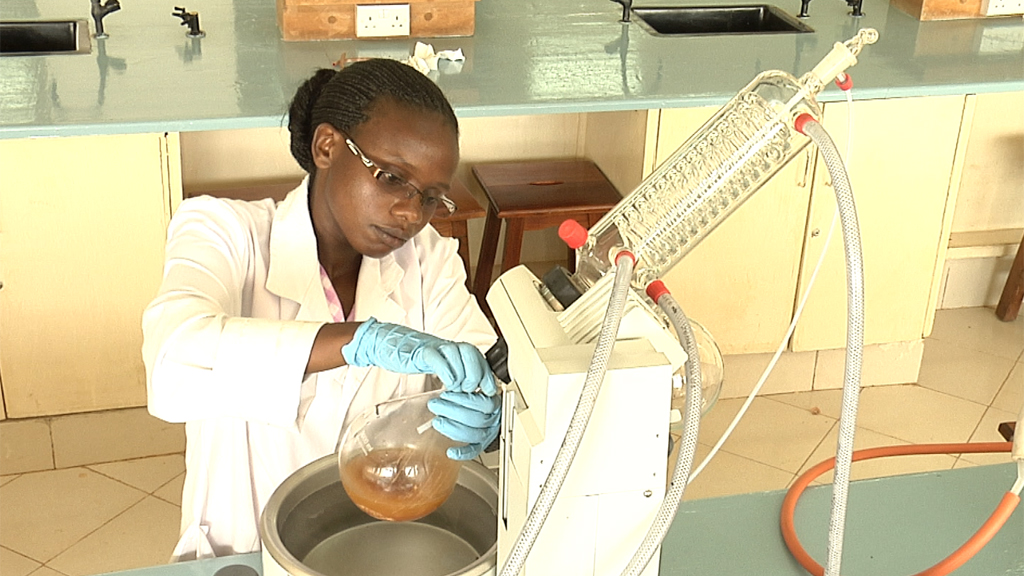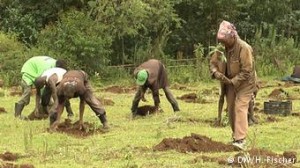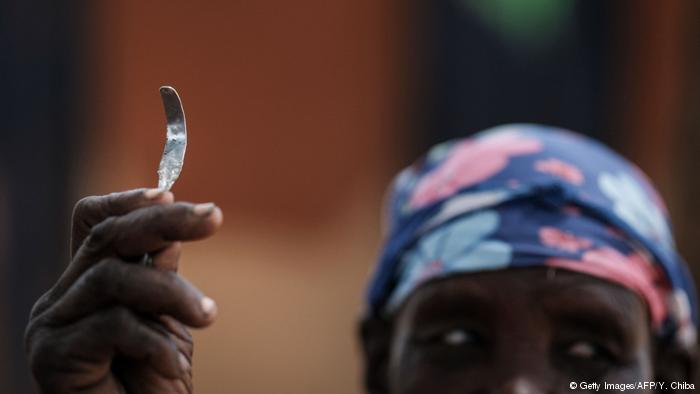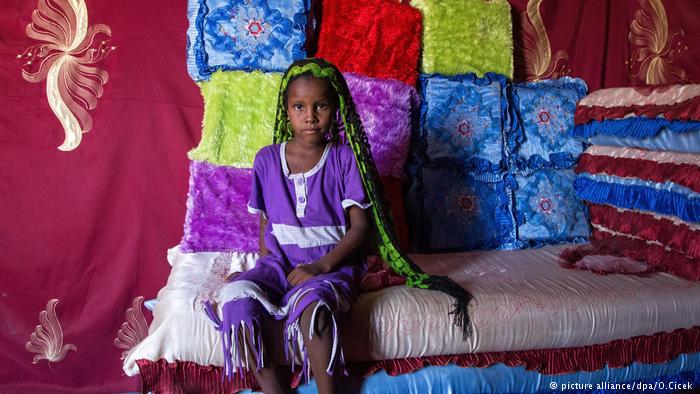Two women save Kenya’s anti-cancer tree
The Prunus Africana tree contains ingredients that help fight illnesses like prostate cancer. But the tree is now under threat. Two Kenyan women have taken up the fight to protect this valuable tree.
The lives of two Kenyan women Dorothy and Mary couldn’t be more different. One is used to life in the city, the other in a village. One is young and ambitious about her upcoming professional life, one has already retired. Dorothy and Mary do not know each other but they share one thing: Their commitment to a very special tree called Prunus Africana.
23-years old Dorothy Nyamai studies biochemistry in the Kenyan capital Nairobi. For her master’s thesis, she is studying the bark of the Prunus Africana. The tree’s bark is used to make medicine for many illnesses, but primarily for prostate cancer. “Working on a species which is used in cancer treatment is of high interest to me,” Dorothy says. The sad reason for that: Dorothy’s mother died of uterine cancer, her sister died of breast cancer.
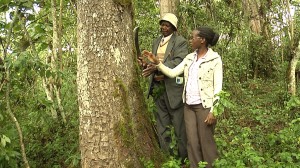
James Njuguna, expert in traditional medicine, shows Dorothy Nyamai how to take the bark of the Prunus Africana without harming the tree. (Copyright: DW/H. Fischer)
Dorothy investigates how the bark’s components can be used to treat cancer. She wants to find out whether there is a difference between trees grown in the wild and those in an experimental nursery. Many men could profit from her work. Worldwide, more than half of all men over sixty have trouble with their prostate.
Villagers suffer from deforestation
But Prunus Africana is threatened by extinction. The tree only grows 1500 meters above sea level. People who live in the areas where the trees grow need its wood to cook and build homes. They also gain farmland by clearing the trees.
One third of Kenya used to be covered with forest; today, this number has decreased to around seven percent. And without the tree’s roots to hold the earth in place, valuable top soil is washed away in the rainy season.
Mary Nyambura is well aware of this. The retired school teacher lives in a small village in the Aberdare Mountains, about one hundred kilometers from Nairobi. When she was young, her village was right next to the forest. Today, she has to walk several kilometers before she sees natives like the Prunus Africana. “20 years ago, the forest was so dense”, Mary says. “During those days, rain used to come at the right time.” Nowadays, failed rains – partly caused by deforestation – present great challenges to Mary and her community: “When we plant, the crops do not grow.”
Restoring biodiversity
Mary is doing what she can to help save the trees. On her walks through the forest she collects seedlings. She then plants them in a small nursery she has been operating for the last ten years. Mary earns about eight Euros a month selling the trees. She is saving the money for her children’s education.
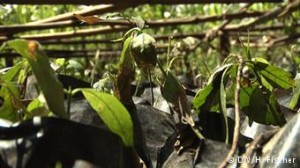
When they grow up they might become life-savers: tree sibblings in Mary Nyamburas tree nursery (Copyright: DW/H. Fischer)
The Kenyan environmental group “Green Belt Movement” (GBM) is supporting people like Mary in setting up their nurseries. It is also one of the main purchasers of young trees. Their aim is reforestation and they want to work together with village residents. GBM has been promoting native species such as Prunus Africana for nearly 40 years.
“You will never ever find monkeys on exotic trees. You always find them on indigenous trees,” Charles Mwangi, one of the organization’s senior program officers, says. “We promote these trees in order to restore biodiversity.”
After the small Prunus Africana trees have been growing in nurseries like Mary’s for about six months, the villagers and GBM activists take them to a meadow they want to turn back into a forest. “My wish is to see this forest as thick as it was 20 years ago,” Mary says.
New source of income for farmers
Close to the small town of Muguga, just a few kilometers outside Nairobi, there is a Prunus Africana test plantation. Dorothy, the master’s student, comes here to take bark samples for her experiments. Her research not only advances medical research, but also helps people living off the land.
“If we find that the components of the species when it is in the wild are the same as the ones which are in the domesticated stand, it will be an advantage for the farmers. They will be able to go for the domestication of this species, which is threatened with extinction,” she says.
“When we have more of the trees being domesticated, since the bark is of high value, we can advocate for farmers to export it because it has a ready market in Europe for production of herbal drugs.”
During the 1990s, 3,000 to 5,000 tons of Prunus Africana bark was exported from Africa to countries like France and Spain every year. This is the largest amount of any African medicinal plant to be traded internationally. Most comes from Cameroon. Up to now, Kenya only has a seven percent stake in the international Prunus Africana trade.
Reforestation and the promotion of sustainable cultivation of the tree would be beneficial for the inhabitants of the Kenyan highlands, people with prostate problems worldwide and the environment. Both Dorothy and Mary see this as an incentive to continue their efforts to help save the tree.
Author: Hilke Fischer
Editor: Marjory Linardy
WTO RECOMMENDS
A responsible citizen
Electronic waste is a menace all over the world. We keep hoarding new gadgets and don’t know how to safely dispose the old and faulty ones. Unknowingly, toxic elements in the gadgets like lead, mercury and nickel add up to the levels of environmental pollution.
Sport the eco-friendly trend
You’ve given up using plastic bags and turned towards solar power to save the Earth. So here are some new green ideas for your wardrobe. Eco-friendly fashion is in.
Eco-friendly is as eco-friendly does
We all love style and comfort. Be it our small office desk or at home, eco-friendly products add that much needed punch to mundane living. So bring out the eco warrior within you and make serious efforts to reduce your carbon footprint. Wondering how to go about it? No worries, here are some suggestions.



